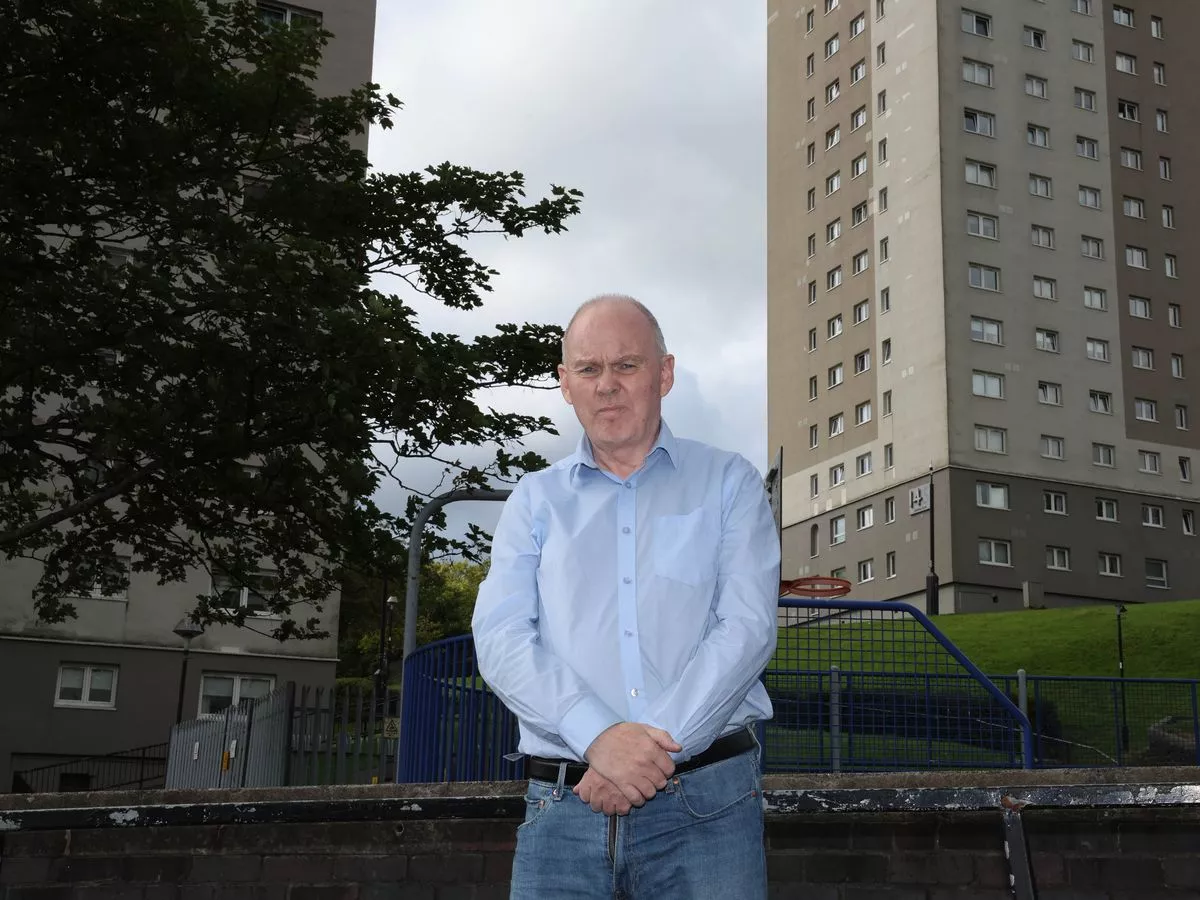By Billy Gaddi,Jordan Shepherd
Copyright dailyrecord

New figures have revealed Scots have been hospitalised amid a ‘total failure’ to deal with mouldy homes. We reported yesterday that Scotland faced a 200 per cent hike in the number of reports of damp and mould by social tenants, with areas like Glasgow seeing a stark increase of 500 per cent. The data, obtained through Freedom of Information Requests to every local authority and housing association by Glasgow Live , shows that reports have skyrocketed from 8,712 to 26,514 across Scotland and 758 to 4,609 in Glasgow. However, the true number of people living in mouldy homes is expected to be significantly higher, as multiple social housing providers have only recently begun to gather data, and the numbers do not include private tenants. It has now been revealed that dozens of Scots have turned up at A&E departments across the country, blaming damp and mould for their health problems. No Scottish health board currently tracks mould exposure as it’s too difficult to pin down as a medical cause. However, Freedom of Information requests have uncovered the number of patients who told emergency staff their illness was linked to mould. NHS Lanarkshire reported the highest number of cases with 24, with the majority in 2023 (six) and 2024 (10). NHS Greater Glasgow and Clyde had the second-highest number of cases, with all reported between 2022 and 2024. NHS Orkney and NHS Highland both reported cases during 2023. Mould and damp can cause a variety of respiratory conditions like coughing, wheezing, breathlessness, allergies, and worsening asthma, as well as skin rashes and eye irritation. In people with weakened immune systems or existing lung diseases, mould exposure can lead to serious infections such as aspergillosis, or trigger symptoms like headaches, fatigue, or even seizures in rare cases. The majority of people living through the consequences of living in a mouldy home, such as Sarah McEwan, will not be included in these statistics . Sarah noted in February how she had been ‘left suicidal’ living in a mould-infested flat for almost two decades. She said: “I was born with dislocated hips and living here over the past 18 years has taken me to my breaking point. I had silent pneumonia and took a bad chest infection and the GP said it could be caused by dampness and breathing in mould. “I remember waking up one morning and I couldn’t breathe. I am meant to get a hip replacement on the 20th of January. It was meant to be on the 16th of December but I was coughing up blood. Sometimes I wake up and it is like I am choking. “People can’t believe I live like this. I burst into tears because when I go to see family because they all say I smell damp.” Reports have increased exponentially in the last five years, with the Central Belt having the worst problem . Edinburgh, Glasgow and Renfrewshire made up the top three respectively, with East Ayrshire and Fife following closely behind. Poor quality housing, lack of information on how to deal with dampness, skyrocketing energy bills, lack of maintenance and the age of housing stock have all been blamed for the rise in reports . This comes as Awaab’s Law will come into force for the social rented sector from October 27. The law means social landlords in England will have to address all emergency, damp and mould hazards that present a significant risk of harm to tenants . The legal measure was named after Awaab Ishak who died in 2020, after being exposed to mould in his home in Rochdale. The law will be implemented in Scotland’s rented sector from March 2026, subject to Parliament’s agreement. As a result, social housing residents in Scotland will be given greater protection against issues of disrepair in their homes, such as damp and mould. However, campaigner Sean Clerkin, of the Scottish Tenants Association, believes the law does not go far enough. He said: “These statistics are shocking and back up what I said to the Local Government and Transportation Committee of the Scottish Parliament earlier this year. “Scotland is facing an imminent public health crisis unless the proposed Awaab’s Law for Scotland has a comprehensive statutory framework attached to it, including severe financial penalties for landlords. It is no use just giving timeframes to landlords to tackle damp and mould. “A proper law on damp and mould should stipulate that all landlords must remediate damp and mould to the highest standards by removing all damp and mould from all homes. A paint-over job only exacerbates matters. “All social and private landlords should be required by law to have accurate and up-to-date property condition information on their housing stock, based on comprehensive stock condition surveys and the use of new technology to monitor their homes. “All inspectors and contractors that deal with damp and mould should be trained and certificated to a national professional standard and they should engage a systematic approach in gathering information on a home through a walk through inspection of external and internal parts of a home where precise measurements are taken addressing the root causes of damp and mould in the home ensuring long term resolution and prevention. This is the only way to ensure a healthy living environment. “A zero-tolerance approach to damp and mould in Scotland has to be adopted by all now if we are to avoid further damaging the health of tenants and their families in the future.”